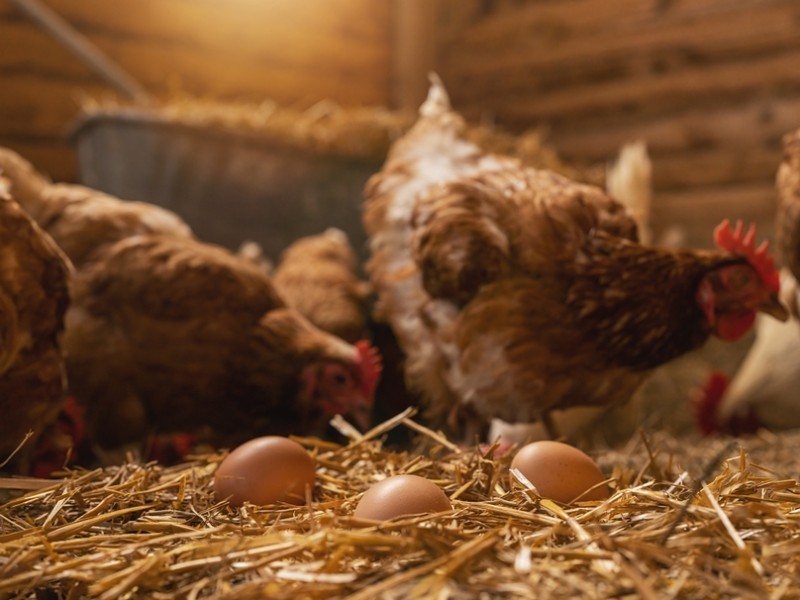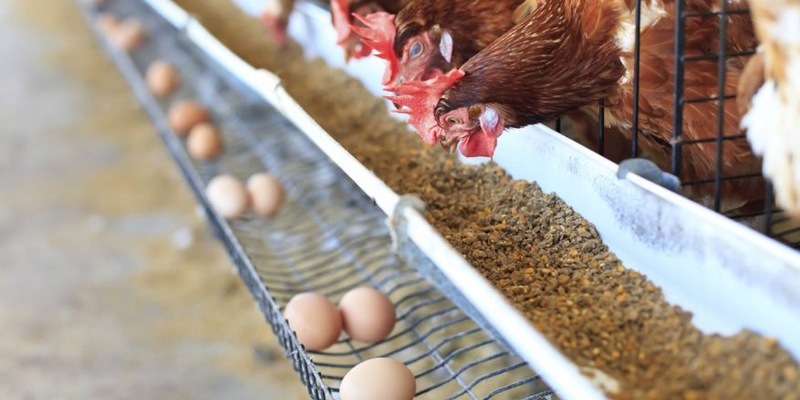
What is the Best Environment for Chickens to Lay Eggs?
When it comes to poultry farming, providing the best environment for chickens to lay eggs is crucial for maximizing productivity and ensuring the health of the hens. Various factors play a significant role in creating this optimal setting, including housing design, temperature control, humidity levels, lighting, and nutrition. Each of these elements can greatly influence egg production.
Housing Design: A Critical Component
The layout and structure of the housing are fundamental to establishing the best environment for chickens to lay eggs. Layer houses should be spacious enough to allow birds to move freely without overcrowding. Overcrowded conditions can lead to stress, aggression, and reduced egg production.
Key Features of Ideal Housing:
- Ventilation: Proper airflow helps regulate temperature and reduce humidity, which is essential for preventing respiratory issues and maintaining comfort. Good ventilation systems ensure that harmful gases, like ammonia, are effectively removed from the environment.
- Nesting Boxes: Providing adequate nesting boxes is vital. Each hen should have access to a comfortable and private space to lay her eggs. The general rule is to provide one nesting box for every four to five hens. Nesting materials like straw or wood shavings can encourage hens to use the boxes.
- Perches: Hens naturally prefer to roost off the ground. Installing perches in the housing allows them to exhibit natural behaviors, contributing to their well-being and ultimately impacting egg production positively.
- Cleanliness: Regular cleaning of the housing area is essential to maintain a healthy environment. A dirty environment can lead to diseases and parasites, negatively affecting the best environment for chickens to lay eggs.
Temperature Control: Striking the Right Balance
Temperature plays a critical role in the best environment for chickens to lay eggs. Hens are sensitive to extreme temperatures, whether hot or cold. Ideally, the temperature within the poultry house should range between 70°F (21°C) and 75°F (24°C).
Hot Weather Management:
- Cooling Systems: In hotter climates, cooling systems like fans, misters, or evaporative cooling pads can help keep the temperature down.
- Shade and Water Access: Ensure that hens have plenty of shade and access to fresh water. Dehydration can lead to decreased egg production.
Cold Weather Management:
- Insulation: In colder climates, proper insulation helps retain heat within the coop.
- Heat Sources: Consider providing supplemental heating during extreme cold spells. However, it’s important to avoid overheating, as this can also affect egg production.
Maintaining an optimal temperature not only supports the hens’ physiological needs but also contributes significantly to the best environment for chickens to lay eggs.
Humidity Levels: Finding the Right Balance
Humidity is another critical factor that affects hens’ comfort and productivity. The ideal humidity level in a poultry house should be between 40% and 70%.
- High Humidity Risks: Excessive humidity levels can promote the growth of bacteria and mold, leading to respiratory infections and other health issues.
- Low Humidity Issues: On the other hand, low humidity can cause dehydration and dry skin, also impacting egg production.
Implementing adequate ventilation systems and using dehumidifiers when necessary can help maintain the appropriate humidity levels within the housing.
Lighting: An Often-Overlooked Factor
Lighting is a crucial aspect of the best environment for chickens to lay eggs. Hens require a certain amount of light each day to stimulate egg-laying hormones.
Natural vs. Artificial Light:
- Natural Light: If possible, utilize natural light sources to help regulate laying cycles.
- Artificial Light: In commercial settings, artificial lighting is often used to extend daylight hours, usually to around 16 hours per day, which can enhance egg production rates.
The quality of light is also important; using soft, indirect lighting can help prevent stress and promote a calm atmosphere conducive to egg-laying.
Nutrition: Fuel for Egg Production
A well-balanced diet is essential for hens to produce high-quality eggs consistently. Providing the right nutrition directly impacts the best environment for chickens to lay eggs.
Key Nutritional Components:
- Protein: Hens require a diet rich in protein for optimal egg production. Layers typically need around 16-18% protein in their feed.
- Calcium: Calcium is crucial for shell formation. Providing crushed oyster shells or limestone in addition to layer feed can ensure hens receive adequate calcium.
- Vitamins and Minerals: Essential vitamins (A, D, E) and minerals (phosphorus, magnesium) support overall health and egg quality.
- Fresh Water: Always ensure that hens have access to clean, fresh water, as hydration is vital for both health and production.
Monitoring Health: Regular Check-Ups
Regular health monitoring is vital in maintaining the best environment for chickens to lay eggs. Health issues can lead to decreased productivity, affecting not only the quantity but also the quality of the eggs produced.
Key Health Monitoring Practices:
- Daily Inspections: Observe hens daily for signs of illness, such as lethargy, reduced feed intake, and unusual droppings.
- Vaccinations and Deworming: Implement a vaccination schedule and regular deworming protocols to protect your flock from common poultry diseases.
- Biosecurity Measures: Implement biosecurity measures to prevent the introduction of pathogens into your flock. This includes controlling access to the poultry house, using clean equipment, and isolating sick birds.
- Consultation with Veterinarians: Establish a relationship with a poultry veterinarian who can provide guidance on health management and any emerging health concerns within your flock.
Conclusion
Creating the best environment for chickens to lay eggs involves careful consideration of multiple factors including housing design, temperature control, humidity levels, lighting, nutrition, stress management, and health monitoring. Each element plays a critical role in ensuring that hens are comfortable, healthy, and productive.
By focusing on these aspects, poultry farmers can create an optimal environment that not only increases egg production but also promotes the overall welfare of the chickens. In turn, this commitment to best practices will yield high-quality eggs, benefiting both the producers and consumers alike.
As the poultry industry continues to evolve, adopting modern techniques and technologies will further enhance the conditions under which chickens are raised. By prioritizing animal welfare and environmental sustainability, farmers can contribute to a more resilient agricultural system and ensure that they are producing eggs in the best environment for chickens to lay eggs.

